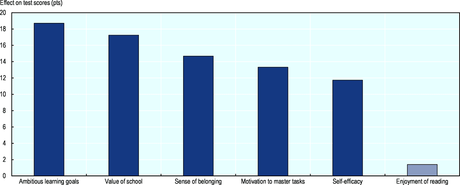E-learning is a type of education that relies on electronic technology to deliver learning material and instruction. It includes a wide range of applications, such as online courses, computer-based training, and digital textbooks. While e-learning has been around for many years, it has become increasingly popular in recent times due to its convenience and affordability. There are several advantages to e-learning, which this article will explore.
Education is constantly evolving, and now more than ever, students have access to a variety of different methods of learning. One such method of learning that has become increasingly popular in the past few years is e-learning. E-learning is the process of learning remotely through a computer or other digital device. There are many advantages to e-learning, which is why it continues to grow in popularity. Let's take a closer look at some of these advantages.

Image Credits : https://pixabay.com/
One of the primary advantages of e-learning is that it allows students to learn at their own pace. This can be especially helpful for students who struggle with traditional instructional methods or those who need more time to fully understand new concepts.
E-learning has become an increasingly popular way to learn, and for good reason. It offers many advantages over traditional learning methods. In this blog post, we'll explore some of the key benefits of e-learning. Whether you're a student or a teacher, e-learning can help you achieve your goals in a more efficient and effective way. So let's take a closer look at what e-learning has to offer.
Whether you're a student looking to reduce the amount of time you spend on transit, or an employee seeking to improve your professional skills, e-learning offers many advantages. In this post, we'll explore some of the benefits of e-learning and how it can help you achieve your goals.
E-learning has become an increasingly popular way to learn in recent years, with many advantages over traditional classroom learning. Here are some of the main benefits of e-learning:
1. Increased Flexibility
One of the biggest advantages of e-learning is that it is highly flexible. Students can access their courses at any time, from anywhere in the world. This is ideal for those who have busy schedules or who live in remote areas.
2. Self-Paced Learning
Another advantage of e-learning is that it allows students to learn at their own pace. This means that they can take as much time as they need to understand a concept before moving on to the next one.
3. Improved Retention
Research has shown that e-learning can improve student retention rates by up to 60%. This is because learners can revisit concepts that they struggled with at their own convenience. Additionally, e-learning courses are often more engaging than traditional methods, which helps to keep students' attention focused.
4. Lower Costs
E-learning can save businesses and educational institutions a lot of money. There is no need to pay for expensive print materials or venue hire. Additionally, e-learning courses can be delivered to large numbers of people at once, which reduces the costs per learner.
5. Increased Accessibility
E-learning courses are available to anyone with an internet connection. This means that people who would not normally have access to traditional education can benefit from e-learning. Additionally, e-learning courses can be translated into different languages, making them accessible to even more people.
Advantages of e-Learning-
1.Online learning is self-paced explain-
There are many advantages to online learning. Perhaps the most obvious is that it is self-paced. This means that learners can progress at their own pace, and go back over material as often as they need to in order to fully understand it. This can be a huge advantage for those who learn best by going over material multiple times or who need a little more time to process new information.
2.E-Learning is student-centered-
E-Learning is student-centered, meaning that the focus is on the learner and their needs. This approach allows for a more personalized learning experience, as learners can move at their own pace and choose materials that are most relevant to them. Additionally, e-Learning can be accessed from anywhere with an internet connection, making it convenient and flexible for busy learners.
3.E-Learning is cost-effective-
E-Learning is cost-effective because it requires fewer resources than traditional classroom instruction. It also eliminates the need for expensive materials, such as textbooks. In addition, e-Learning can be delivered to a larger audience more easily and at a lower cost than traditional instruction.
4.Individual learning styles-
There are many advantages to e-learning, but one of the most significant is that it can be tailored to each individual's learning style. Unlike traditional classroom settings, which often require students to conform to a certain teaching method, e-learning can be adapted to fit each learner's needs. This allows for a more efficient and effective learning experience, as students are more likely to retain information when it is presented in a way that suits their individual learning style.
5.Customizable learning environments-
There are many advantages to using e-learning in your educational setting. One of the most significant advantages is that it allows for a more customized learning environment. E-learning provides educators with the ability to create tailored learning experiences that meet the specific needs of their students. This type of customization is not possible with traditional classroom instruction.
6.E-Learning fully utilizes analytics-
E-Learning can provide a more personalized learning experience for each student by tracking and analyzing data. This data can be used to identify areas where students are struggling and adjust the curriculum accordingly. Additionally, analytics can be used to predict which students are likely to succeed in a given course and tailor the content to their needs.
7.Online learning could solve teacher scarcity-
There are many advantages to e-learning, especially when it comes to addressing teacher shortages. Online learning can help connect students with great teachers from around the world, no matter where they live. Additionally, online courses can be more flexible and accommodating to students' schedules than traditional classroom-based courses. Finally, e-learning can be more cost-effective than traditional instruction, since it doesn't require the same level of infrastructure or personnel. All of these advantages make e-learning an attractive option for addressing teacher shortages.
8.E-Learning is environmentally friendly-
One of the great advantages of e-Learning is that it is much more environmentally friendly than traditional classroom learning. With e-Learning, there is no need to print out handouts or other materials, and there is no need to travel to a physical classroom.
This can save a lot of paper and reduce pollution from transportation. In addition, e-Learning can be done from anywhere, so it doesn't require a physical space, which can also save energy.
Though there are many advantages of e-Learning, being more environmentally friendly is a key advantage that sets it apart from traditional learning. With e-Learning, we can help preserve our planet while still getting the education we need.
E-Learning is a great way to learn without harming the environment. By using e-Learning, you can help reduce your carbon footprint and save resources.
E-Learning is more flexible and convenient than traditional classroom learning. You can learn at your own pace, and in your own time. This means that you can fit learning into your busy schedule, and you don't have to waste time traveling to and from classes.
9.No need for textbooks-
There are many advantages of e-Learning, ranging from the convenience of not having to carry around physical textbooks to being able to learn at your own pace. One of the biggest advantages of e-Learning is that it can be done entirely online, which means you can access your course materials from anywhere in the world.
Another advantage of e-Learning is that it can be more engaging than traditional classroom-based learning. With e-Learning, you can often choose how you want to learn the material, whether that's through videos, interactive exercises, or readings. This can make the learning process more enjoyable and effective.
Finally, e-Learning can be more cost-effective than traditional education. With e-Learning, you don't have to pay for things like textbooks, transportation, or classroom space. Additionally, you can often access e-Learning courses for free or at a lower cost than traditional courses.
10.Online learning is time-efficient-
There are many advantages of e-learning, but one of the most important is that it is time-efficient. With e-learning, you can study at your own pace and in your own time. This means that you can fit your studies around your work and other commitments. E-learning also gives you the flexibility to choose when and where you study. You can study at home, at work, or on the go.
Another advantage of e-learning is that it is cost-effective. With e-learning, you don't have to pay for travel or accommodation costs. You also don't have to take time off work to attend classes. E-learning is also flexible in terms of payment options. You can pay for your courses upfront, or you can spread the cost over a period of time.
E-learning is also convenient. With e-learning, you can access your courses 24/7. This means that you can study when it suits you. E-learning is also flexible in terms of where you study. You can study at home, at work, or on the go.
So, there are many advantages of e-learning. If you're looking for a time-efficient, cost-effective, and convenient way to learn, then e-learning could be the perfect solution for you.

Association between learning attitudes and reading performance among students making intensive use of ICT outside of school for schoolwork
Note: The figure displays the association between high/low values of learning attitudes and performance in reading among students making intensive use of ICT outside of school for schoolwork. Bars represent the difference in reading test scores between students in the top vs bottom quartiles of learning attitudes (OECD average). Only students making an extensive use of ICT are considered. Regression controls include: the PISA index of student's and school's socio-economic status, age, gender, immigration status, dummy variables for attending a private and a rural school. Regressions are estimated for each of the attitudes separately. Country fixed effects are included in the regression. Bars with patterns indicate coefficients that are not statistically significant at the 5% level. Results hold when adding controls for students' grade compared to modal grade in the country and type of programme (general, pre-vocational, vocational).
Source: OECD, PISA 2018 Database. Credits : https://www.oecd.org/
Conclusion- Advantages of e-learning
Although e-learning has been around for a while, it is still growing in popularity. There are many advantages to e-learning that can benefit both the learner and the organization. E-learning provides opportunities for people to learn anywhere at any time, which leads to increased productivity. Additionally, e-learning can improve employee retention rates and save organizations money. We hope this article has provided you with a better understanding of the benefits of e-learning and its potential impact on your organization.
Although e-learning has been around for a while, it is still growing in popularity. There are many advantages to using e-learning, which is why more and more businesses are adopting this method of training employees. If you're not sure if e-learning would be a good fit for your business, we encourage you to explore the possibilities. With so many benefits, e-learning is definitely worth considering.

